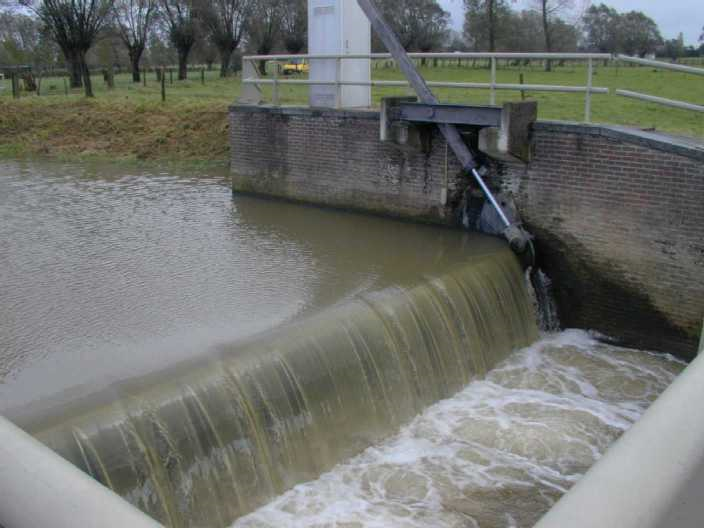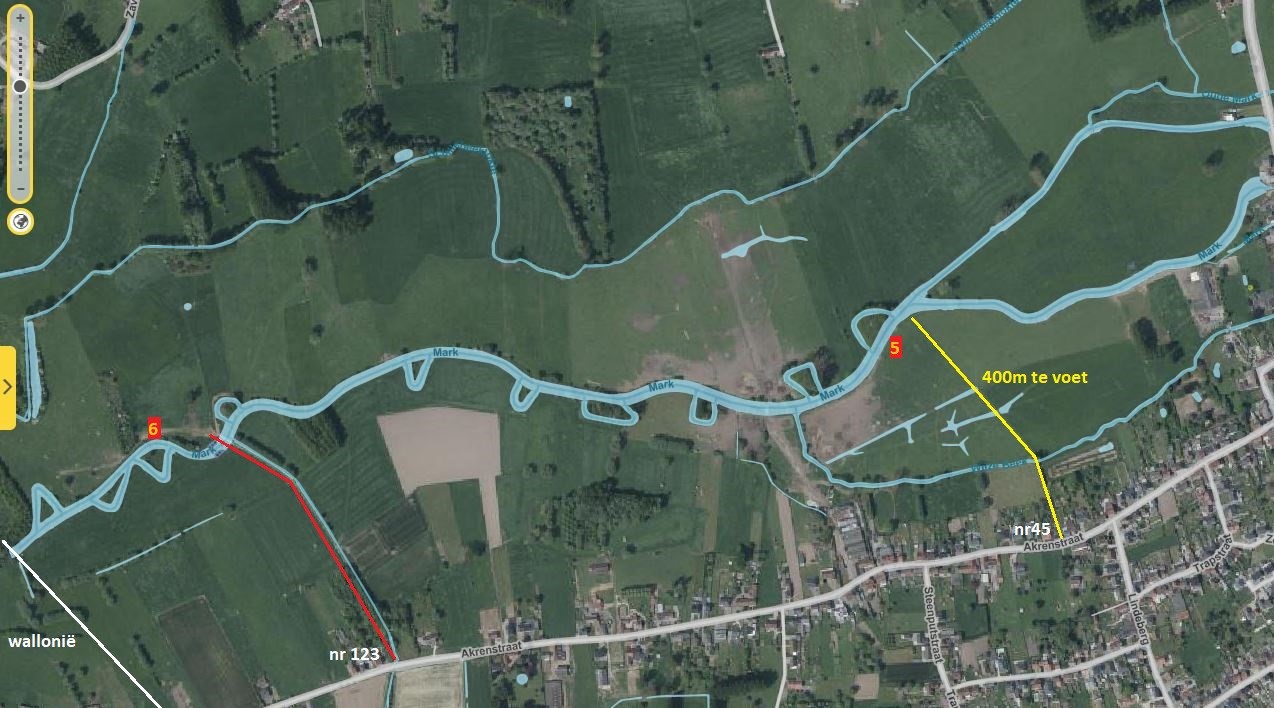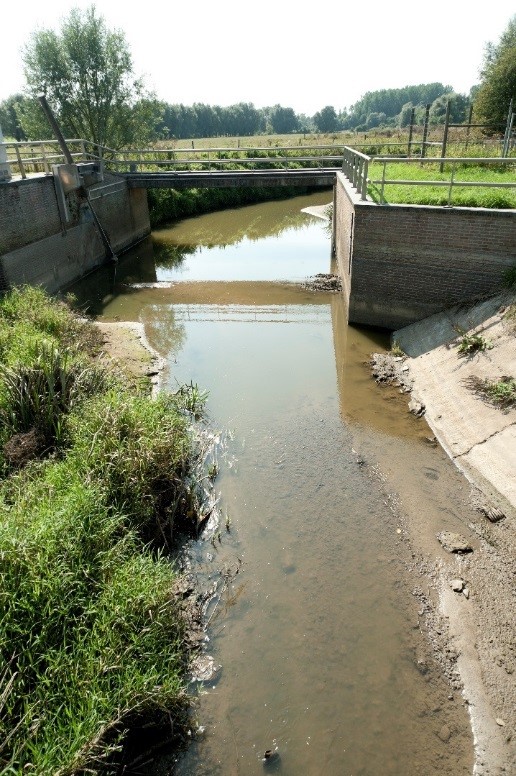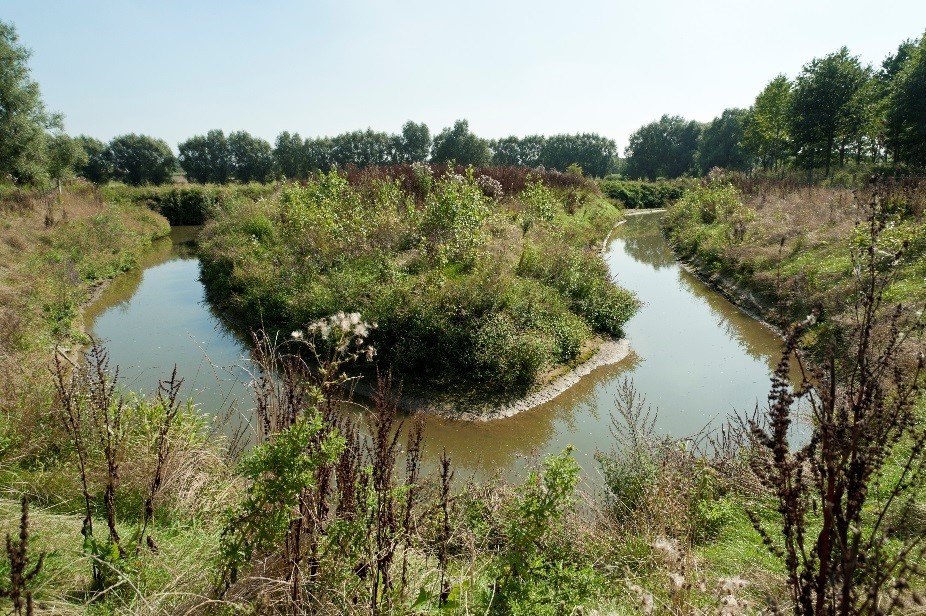Flowing from Edingen to Deux-Acres in the Hainaut region of Belgium, the River Mark had great potential to be a favourable habitat for rheophilic fish species such as brook lamprey, common dace and chub. However, the construction of water mills and weirs along the river’s length caused conditions for migratory fishes to deteriorate and species had disappeared or were limited to isolated stretches. The removal of Weir No.1, the first weir found on the river from its confluence with the River Dender, has made fish migration into the Mark possible again.
HISTORY
The River Mark is 28 kms long, 19 kms of which is managed by the Flemish Environment Agency. It has been impacted by human activity since the Middle Ages when several water mills were built on the river. Later a series of automatic weirs were installed to regulate the water level and the meandering lower part of the Mark was straightened to improve drainage and flood control. This affected the free-flowing characteristics of the river: average flow rates were reduced; the composition of river bed material altered with the increase in finer sediments; and the sequence of pools and riffles disappeared. Not only did the habitat quality for rheophilic species deteriorate but fish migration became impossible.
Weir No.1 was built at the beginning of the 1980s by Landelijke Waterdienst (the previous water management company) to control the upstream water level. The weir was electrically-powered with a metal valve contained within a concrete barrier nine meters long which caused a height difference of two meters between the upstream and downstream water levels. The length of river negatively affected by the barrier was two kilometres to the next weir upstream.
Large areas of the Mark valley are now part of the Natura 2000 network but fulfilling the goals of the EU Habitats Directive, the Water Framework Directive and the Benelux decision on free fish migration (M(2009)01) was made more difficult by the presence of Weir 1. The River Mark had already been identified as a priority watercourse because of its importance for species such as eels and bullheads and, during a preparatory study for the weir removal project, a relict population of common dace was found. This was a species that had become very rare in the Dender sub-basin, and the discovery highlighted the importance of the Mark for the recovery of this species on a regional scale. Fishery research also discovered, unsurprisingly, that species diversity and abundance decreased upstream of each barrier.
PLANNING THE REMOVAL AND COST
The decision to remove Weir No. 1 was driven mainly by the commitment of the Benelux countries of Belgium, the Netherlands and Luxembourg to remove fish migration barriers. Many of the meanders which had previously been cut off were still present along the River Mark and it was decided that, instead of building a fish passage to bypass the weir, it would be better to remove it completely and restore the meanders to their historic condition. The aim of removal was, therefore, twofold: to allow fish migration and to restore the riverine habitat.
The decision-making authorities for this removal were the Flanders Environment Agency (VMM) and the Agency for Nature Conservation.
The plans were discussed by stakeholders such as the municipal authorities, the local nature organisation and the Flemish Agency for Nature and Forestry, and consultations took place with the adjacent landowners, who were mainly farmers, as changes in water levels would occur after the removal. There were also environmental specifications for the works. These concerned the digging out and reinstatement of meanders to their original dimensions in order to restore the free-flowing conditions that had previously existed. Finally, a building permit was granted for the removal itself.





